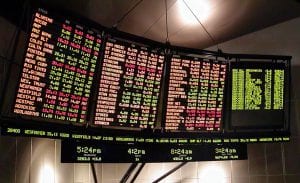
Jan 8, 2024
Unlocking Success with Selling Puts: A Simple, Concise, Interesting, and Easy Guide
Introduction
Selling puts is like offering insurance to other investors. When you sell a put, you’re promising to buy a stock at a specific price if it drops below that level. In return, you get paid an upfront fee.
Think of it as saying, “I’m willing to buy this stock if it goes on sale, and I’ll get paid now for making that commitment.” The key is to pick stocks you wouldn’t mind owning at a discount. It’s like getting paid to shop for your favourite items when they’re on sale.
However, it’s essential to be cautious and only sell puts on stocks you genuinely want in your portfolio. Avoid speculative bets, as that could lead to unwanted surprises. It’s a strategic way to potentially make money in the stock market while staying mindful of the risks involved.
Summary of Selling Puts
Selling Puts:
Open your brokerage platform.
Select the stock you’re interested in.
Choose “Sell to Open” in the options section.
Pick the expiration date and strike price.
Confirm the order and wait for it to execute.
Selling puts, also known as writing a put option, is a strategy savvy investors use to potentially buy a stock at a lower price than its current market price or generate income. The process begins by opening your preferred brokerage platform. This online portal is often where you can manage your investments, track market trends, and execute trades. It’s important to choose a platform that offers robust tools and resources to assist you in making informed investment decisions.
Next, you must select the stock you’re interested in. This requires thoroughly analysing the company’s financial health, market position, and future prospects. Consider factors such as earnings growth, debt levels, and industry trends. It’s also beneficial to understand the company’s business model and the potential risks it faces. This analysis will help you feel confident that the stock you choose is a good fit for your investment goals and risk tolerance.
Once you’ve selected your stock, navigate to the options section and choose “Sell to Open.”. This action initiates the selling of a put option, where you are committing to buy the stock at a specified price, known as the strike price, before a certain date. The income you receive from selling the put option is called the premium.
Following this, you need to pick the expiration date and strike price. The expiration date is the last day that the option is valid. After this date, the option becomes worthless. The strike price is the price at which you agree to buy the stock if the option is exercised. It’s important to note that the more time there is until the option expires, the more expensive the option will be, as there is more time for the stock to move in the buyer’s favour.
Finally, confirm the order and wait for it to execute. Make sure to review all the details of the transaction before confirming the order. Once the order is executed, you are obligated to purchase the stock if the buyer exercises the option. It’s essential to have sufficient funds in your account to fulfil this obligation.
Buying Back Puts:
Go to your brokerage platform.
Find the options section.
Choose “Buy to Close” for the same put option.
Specify the number of contracts.
Confirm the order, and it will close.
Buying back puts, also referred to as the “Buy to Close” transaction, is the process of purchasing an identical put option to the one you initially sold. This strategy is typically employed when an investor seeks to exit the position before the expiration date, often when the market moves unfavourably or the investor decides to secure their profit.
To initiate this process, you need to access your brokerage platform. This could be a web-based application or a mobile app, depending on your preference. A brokerage platform provides the tools and features necessary for managing your investments, including the ability to buy and sell options.
Once you’ve logged into your platform, your next step is to navigate to the options section. This area of the platform presents a comprehensive view of available options, including puts and calls, their strike prices, expiration dates, and other crucial details.
Here, you would choose the “Buy to Close” option for the same put that you initially sold. It’s important to ensure that the details match the original put option you wrote, including the underlying asset, strike price, and expiration date. This ensures that the transaction effectively nullifies the obligations of the previously sold put option.
Afterwards, you will need to specify the number of contracts. This is the number of shares that the put option represents. Each standard contract typically represents 100 shares of the underlying stock. It’s crucial to remember that the number of contracts you buy to close should be equal to the number of contracts you originally sold to open.
Once you’ve confirmed these details, the final step is to confirm the order. After the order is processed, your original position is closed, freeing you from the obligation to buy the underlying stock. It’s always wise to review the details of the transaction before you confirm the order to avoid any discrepancies.
In essence, buying back puts is an important strategy for managing risk and securing profits in options trading. It allows investors to exit their position and eliminates the obligation to buy the underlying stock. As with all investment strategies, it’s essential to understand the mechanics and risks involved and to conduct thorough research or seek professional advice before engaging in options trading.
Explanations for Buying Back Puts:
The primary reason behind repurchasing the put is to capitalise on completing the main move and to release capital for another put play. When selling a put, you must have the funds available to buy the shares if they are assigned to you. We strongly advise against selling naked puts on margin and only endorse selling puts on stocks we wouldn’t mind owning. If the shares are assigned, strategic options are available, such as selling covered calls or selling the stock and initiating another put sale.
Selling puts presents numerous possibilities, and if implemented correctly (as described above), this strategy can be applied to plays we recommend in the Market Update service to reduce your entry costs. Effectively, selling correctly translates to receiving payment for placing a limit order. If filled, you consistently enter at a better price than someone who simply bought the stock outright. However, remember that the shares will not always be assigned to you. If that’s your objective, here is one of the many strategies you can employ to ensure that the shares are assigned to your account.
Let’s assume the suggested entry point to purchase the stock is in the $12.00 to $13.00 range, but the current market price is $16. In this scenario, you patiently wait for the stock to drop, perhaps to $13.50 or even $13.00. Once it reaches this level, you sell a put with a strike price of $13.00 or higher. For instance, you could consider selling puts with strikes at $14.00 or $15.00.
Since the put is in the money, the likelihood of being assigned the shares is relatively high. Additionally, you benefit by entering at a lower price because you can subtract the premium received from the final purchase price. This strategy increases the probability of sharing assignments and allows you to reduce your overall entry cost-effectively.
Words that Leave an Impression: Captivating Articles
What Economic Recovery? Most Americans Lack $1000 In Savings
Federal Reserve Interest Rate: Dangers & Benefits of Negative Rates

Why Are Interest Rates So Low: Coronavirus That’s Why
CAT Stock Price Projections And Future Trends
Why own gold in uncertain times: Protection From Disaster
HD stock quote And future price trends
Valeant Shares Slump



